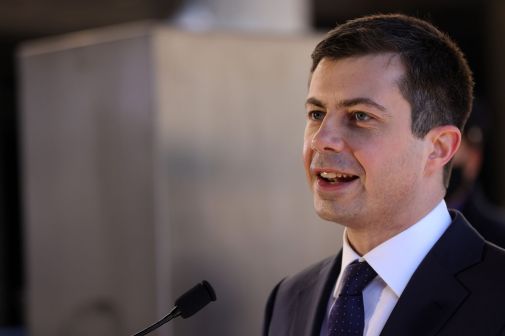Hawaii launches four-year $6 million connected-vehicle pilot

A new partnership between the Hawaii Department of Transportation, the Federal Highway Administration, the University of Hawaii and several transportation technology companies will transform a section of Honolulu into a $6 million, four-year long connected-vehicle data laboratory, the university announced on Tuesday.
Operating on a five-mile stretch of road in the city that covers 34 intersections, the pilot project will install technology that tracks how many cars, bicyclists and pedestrians that pass on the streets and sidewalks, as well as how fast and what type of vehicles are passing through.
The technology, supplied by Qualcomm and other manufacturers, will rely on “vehicle-to-everything,” or “V2X” units that are connected to the corridor’s traffic lights, and a traffic software program administered by HDOT. The V2X units — which don’t require a cellular network subscription to operate — will connect the traffic signals to nearly every cloud-connected device that passes through the intersections, including drivers’ and pedestrians’ smartphones, and the software installed in most late-model cars.
The project is meant to prepare Honolulu for a future in which virtually all new infrastructure will exchange data, according to David Ma, an engineering professor at the University of Hawaii.
“In order to help the State of Hawaiʻi move forward with its visionary plan for future [connected autonomous vehicle] deployment, UH College of Engineering is proud to lead this effort of upgrading the traffic signal system of Nimitz Highway,” Ma said in a press release. “Not only will this project create a smart transportation corridor in the heart of downtown Honolulu, it also serves to show the state and UH’s commitment both to high-tech applications and to a safer, more efficient transportation system for Hawaiʻi.”
While the pilot will last four years, University of Hawaii students and government researchers will be able to analyze the data in a new traffic engineering lab, supplied by Econolite, a transportation software publisher that’s also a partner in the project. The lab will be equipped with “the most advanced traffic control, management and detection devices,” according to the university, as well as a video wall for data visualization. Once the system is fully operational across all 34 intersections, the lab will be a “game-changer,” in data analysis, Ma said.
“It will create unprecedented opportunities in cutting-edge research in traffic mobility and safety, such as vehicle-infrastructure integration, connected vehicle system control, arterial-wide speed harmonization and more,” Ma said. “The lab will become a mini traffic management center that enables UH researchers to analyze traffic data in real time and help HDOT staff make necessary adjustments to optimize the performance of the traffic system.”
The pilot also includes a mobile app, called TravelSafely, that members of the public can use to receive real-time traffic alerts, such as whether an intersection is backed up or a collision has occurred. The project will also deliver applications for red light violations, pedestrian and cyclist collisions, emergency vehicle warnings and traffic signal priorities.
Ninety-five percent of the pilot project’s funding will be covered by grant from the Federal Highway Administration. The money was awarded to “improve mobility and safety” on America’s roads, according to U.S. Transportation Secretary Elaine Chao, who approved $43 million in such funding to 10 different transportation agencies, including Hawaii’s, in June.






